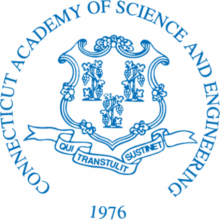As a second grader, Jonathan Rothberg spent a lot of time in the principal’s office. He struggled with reading and, too often, found himself in trouble with his music teacher. However, his mother’s belief that he would one day “do good science,” coupled with his father’s engineer’s emphasis on solving problems, formed the foundation for his later accomplishments. Of course, it didn’t hurt that that there was a chemistry laboratory in his basement where he spent hours experimenting, or that at thirteen, he was given one of the first “hobby” computers by his older brother Henry, and taught to program by his other older brother David. These childhood experiences cultivated his problem solving abilities. When he arrived at Carnegie Mellon University to begin his training as a chemical engineer, he discovered that he was “best at solving problems that no one had solved before.” Jonathan, whose early school life was marked by difficulty, was, by his junior year of college, sequencing DNA, and envisioning ways to do it better – much better. Today, Jonathan Rothberg, PhD, is best known for inventing a way to decode your genome — the biological “program” (the “book of life”) stored on the 23 pairs of chromosomes in each of your cells that makes you unique — and is the recipient of the 2010 Connecticut Medal of Technology.
After completing college, Dr. Rothberg attended Yale University, earning a PhD in biology. His thesis work — decoding a gene responsible for wiring the nervous system — appeared on the cover of the prestigious journal Cell. He realized that he “wanted to do this work on a big scale” and to develop medicines. To accomplish this, he started CuraGen. At CuraGen he was the first to completely map out how the proteins encoded in a genome functioned together (featured on the covers of Nature and Science) and develop drugs for the treatment of metastatic skin and breast cancer.
When his son Noah was born in 1999 and rushed, not breathing, to newborn intensive care, Jonathan realized he wanted to develop drugs based on personal genomes. While his son was in the intensive care unit, Dr. Rothberg invented the first fast way to sequence DNA and founded 454 Life Sciences. This technology allowed for decoding genomes at a rate never before possible, enabling the first sequencing of an individual human genome — that of James D. Watson, who co-discovered the structure of DNA.
Dr. Rothberg also initiated the Neanderthal Genome Project, cracked the mystery behind the disappearance of the honey bee, uncovered a mysterious virus killing transplant patients, and elucidated the extent of individual human variation — work recognized by Science magazine as the breakthrough of the year for 2007. The New England Journal described Dr. Rothberg’s sequencing innovation as enabling “The New Age of Molecular Diagnostic…” Science magazine called it one of the top 10 breakthroughs for 2008.
Recently, Dr. Rothberg has taken his research further with the creation of Ion Torrent. Ion Torrent is leveraging semiconductor technology to create the first “personal genome machine.” This invention of Dr. Rothberg’s, a sequencing machine on a chip, translates the chemical information in your genome directly to digital information, making genome sequencing an inexpensive and powerful part of medicine, much like the invention of the computer chip did for computing.
Dr. Rothberg is widely published, was twice named as The World Economic Forum’s Technology Pioneer, is an Ernst and Young Entrepreneur of the Year and received The Wall Street Journal’s First Gold Medal for Innovation. He is a member of the National Academy of Engineering, the Connecticut Academy of Science and Engineering, and serves on the board of trustees of Carnegie Mellon University. He is indeed doing “good science.”


